Homemade Tahini Recipe
This post may contain affiliate links. See my disclosure policy.
This easy homemade tahini recipe is so quick to make, takes just TWO ingredients, is less expensive than store-bought, and tastes WAY better! Make a double batch while you’re at it and store it in your fridge for several months to have on hand whenever you need it!
Use it make the best creamy Hummus Recipe or drizzle it over your homemade Falafel!
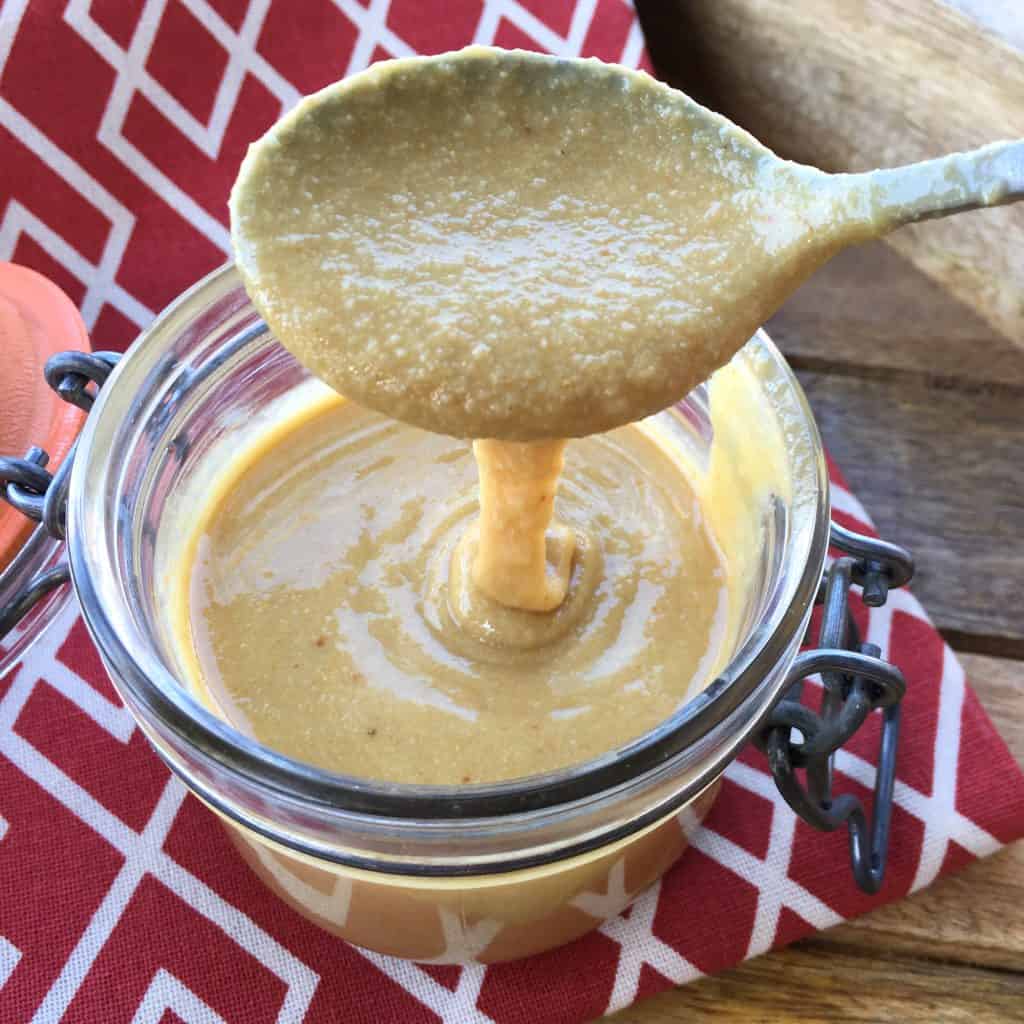
The scenario you may be familiar with: You’re really in the mood for some homemade hummus. Garbanzo beans? Check. Olive oil? Check. Lemons? Check. Garlic? Check. Tahini paste? Aw, dang it. Well don’t let that stop you again. Tahini is not only super simple to make, but homemade is cheaper than store-bought and it tastes better!
What is Tahini?
Tahini is a Middle Eastern condiment that is made from hulled sesame seeds that are toasted and then ground into a paste. It’s a popular staple in Middle Eastern, Greek, and East Asian cooking. It is served by itself as a condiment but also incorporated into a very wide variety of dishes, most famously a central ingredient in hummus.
Tahini Ingredients
To make tahini you only need two ingredients:
- Sesame seeds
- Olive Oil
You may be asking, “why do you need olive oil for tahini?” and that’s a good question because if you look at the ingredients of most commercially-sold tahini, it does not include olive oil. But there’s a good reason why homemade tahini needs the addition of olive oil and that’s because the oil from the sesame seeds cannot be fully extracted without specialized commercial equipment. If you put a bunch of sesame seeds in a regular blender you will get a heap dry ground sesame seeds. Another factor has to do with the freshness of the sesame seeds (the fresher the more oil) and unfortunately most of the sesame seeds available at the store have been sitting there, and in warehouses before that, for a long time. And so we add olive oil.
Shopping Tip: Buy sesame seeds in bulk. Buying the in tiny bags or cans with just a few ounces is expensive and they’re a better deal in bulk. You can buy sesame seeds in the bulk sections of some grocery stores or you can buy them online such as here.
Pro Tips
- Use hulled sesame seeds. Hulled sesame seeds have had their hard outer shell removed which 1) makes the tahini smoother and 2) less bitter tasting.
- Be careful toasting the sesame seeds. As soon as the sesame seeds start changing color watch very closely because they can scorch quickly which will make them bitter. Toast just until they’re golden.
- Use a high quality olive oil.
- Use a high-powered food processor or blender. A food processor like my mini-prep Cuisinart food processor (we’ve had ours for 17 years and it’s still going strong) does a good job and is ideal for smaller quantities like this but for a smoother tahini paste you can use a high-powered blender such as my Vitamix 5200 (we’ve been using it on average twice a day, every day, for the last 15 years and it’s a total workhorse).
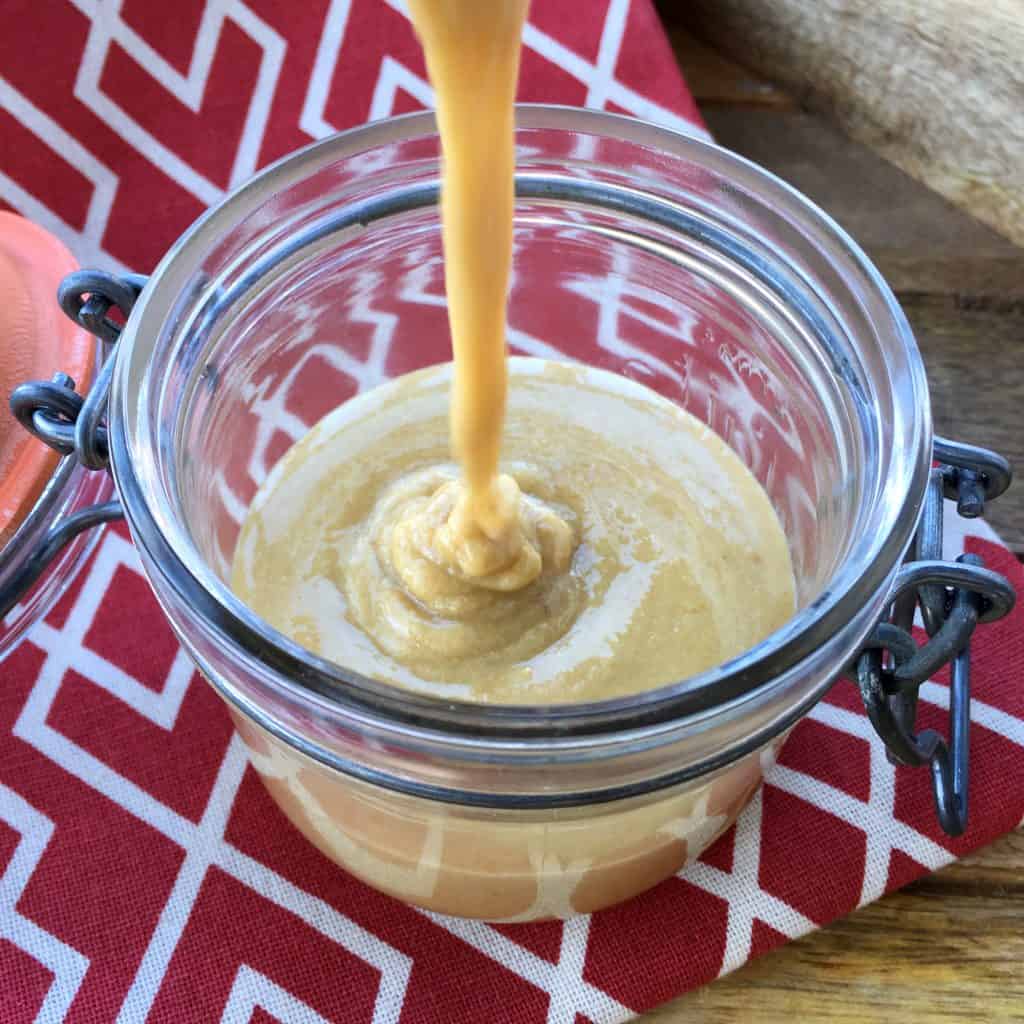
Tahini Recipe
This tahini recipe uses one cup of sesame seeds which will make about 3/4 cup tahini paste, depending on how much olive oil you use. How much olive oil you use will depend on how thick you want the paste. You’ll need at least 3 tablespoons of olive oil and possibly up to 1/3 cup. Note: If you’re using a high-powered blender like a Vitamix, you may need less oil than if you’re using a food processor.
Let’s get started!
Heat a clean, dry cast iron or heavy duty skillet over medium high heat and add the sesame seeds. Stir frequently until they begin to turn golden brown and then stir constantly. Be careful, sesame seeds burn very easily.
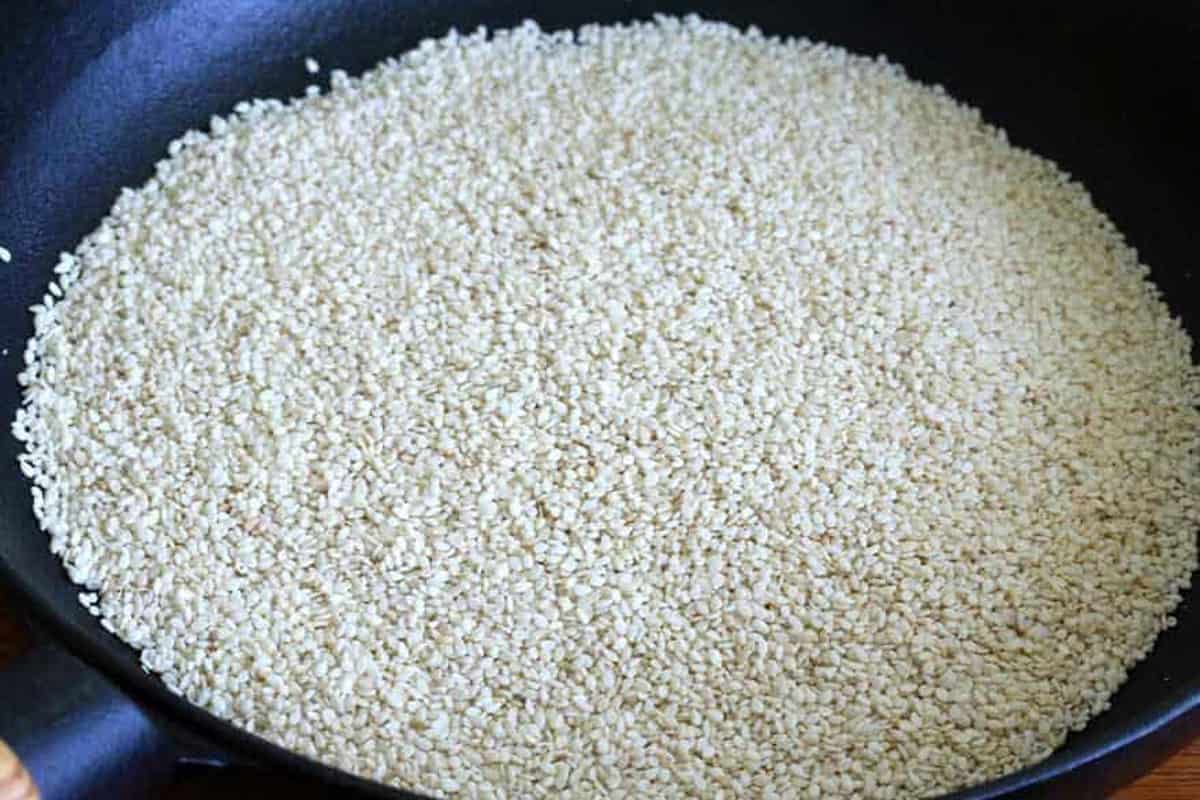
You definitely don’t want burnt sesame seeds (they taste awful!), but you do want them generously golden brown for optimal flavor.
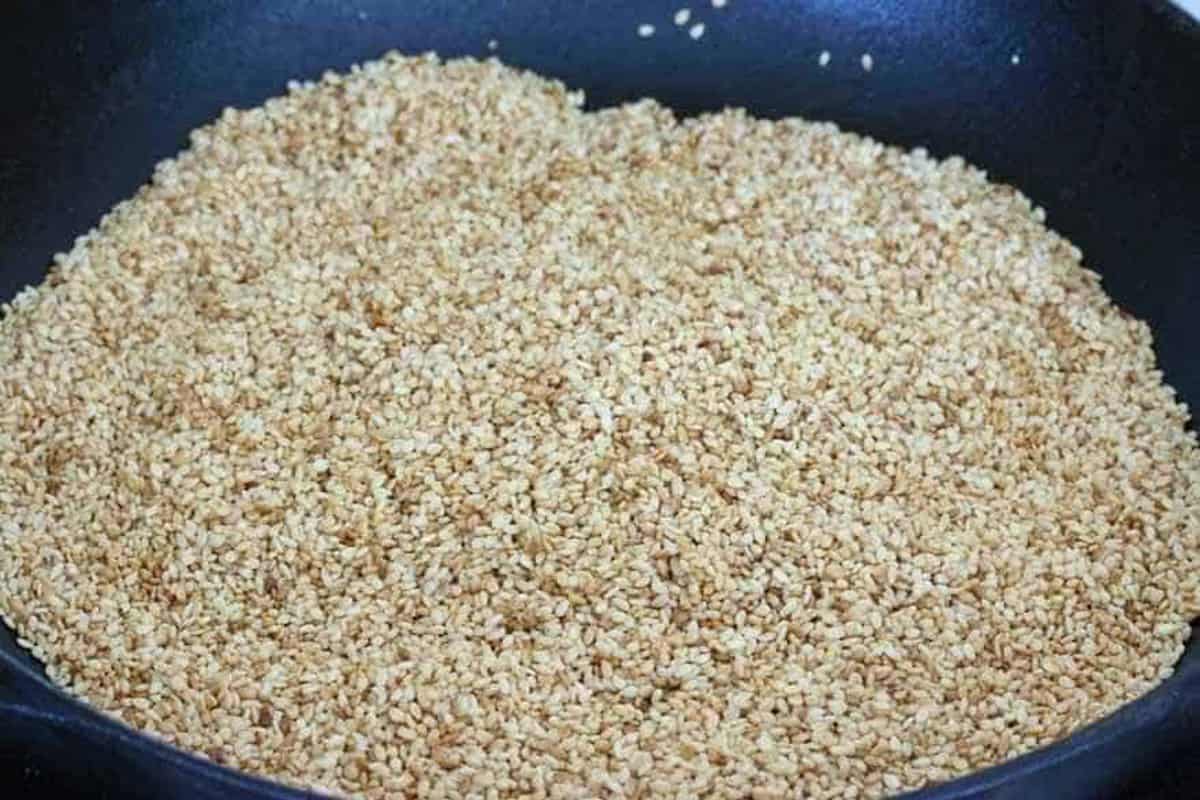
Once they’re toasted, let them cool a few minutes then add them to a food processor. I use and love Cuisinart’s mini prep food processor. With a 3-cup capacity it’s perfect for smaller jobs like this. We’ve had ours for over 15 years and it’s still going strong!
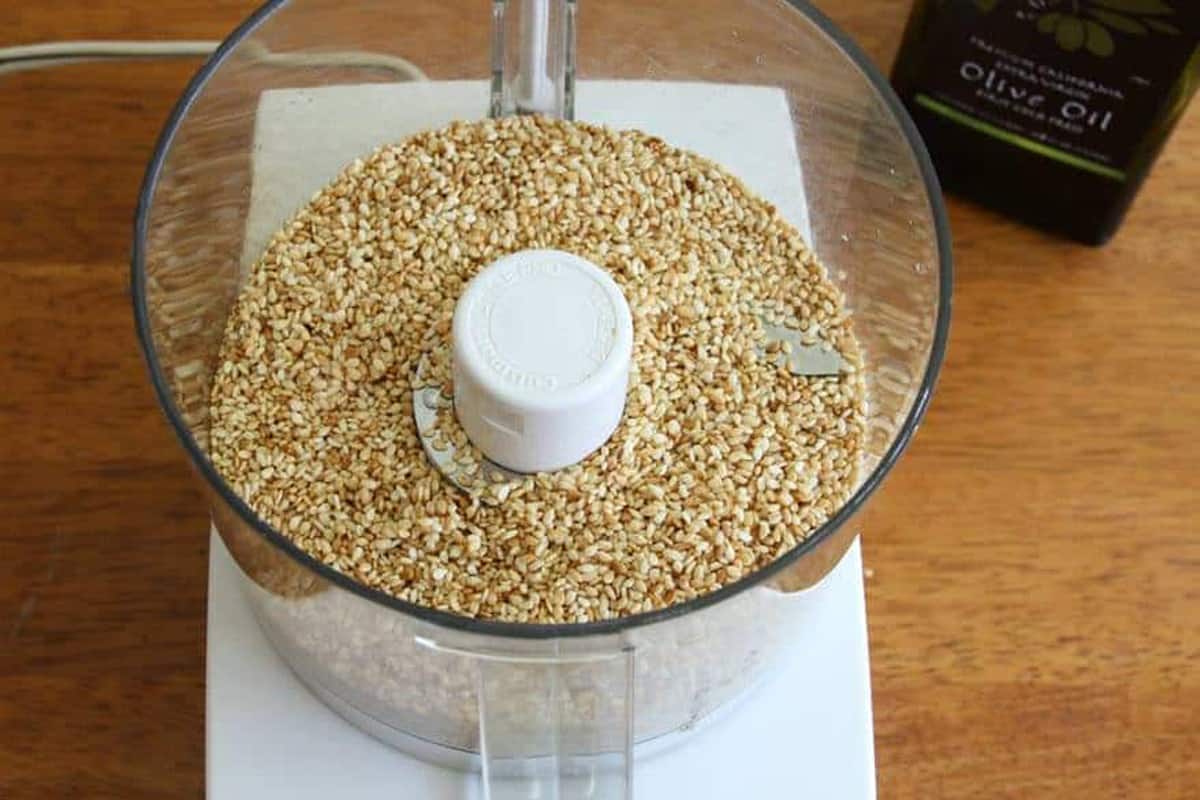
Start by adding 3 tablespoons of olive oil. Process the mixture into a paste, scraping down the sides. Add more olive oil until you reach the desired consistency. If you’re using it to make hummus, the paste should be fairly thickly “pourable” (like in the main recipe picture above).
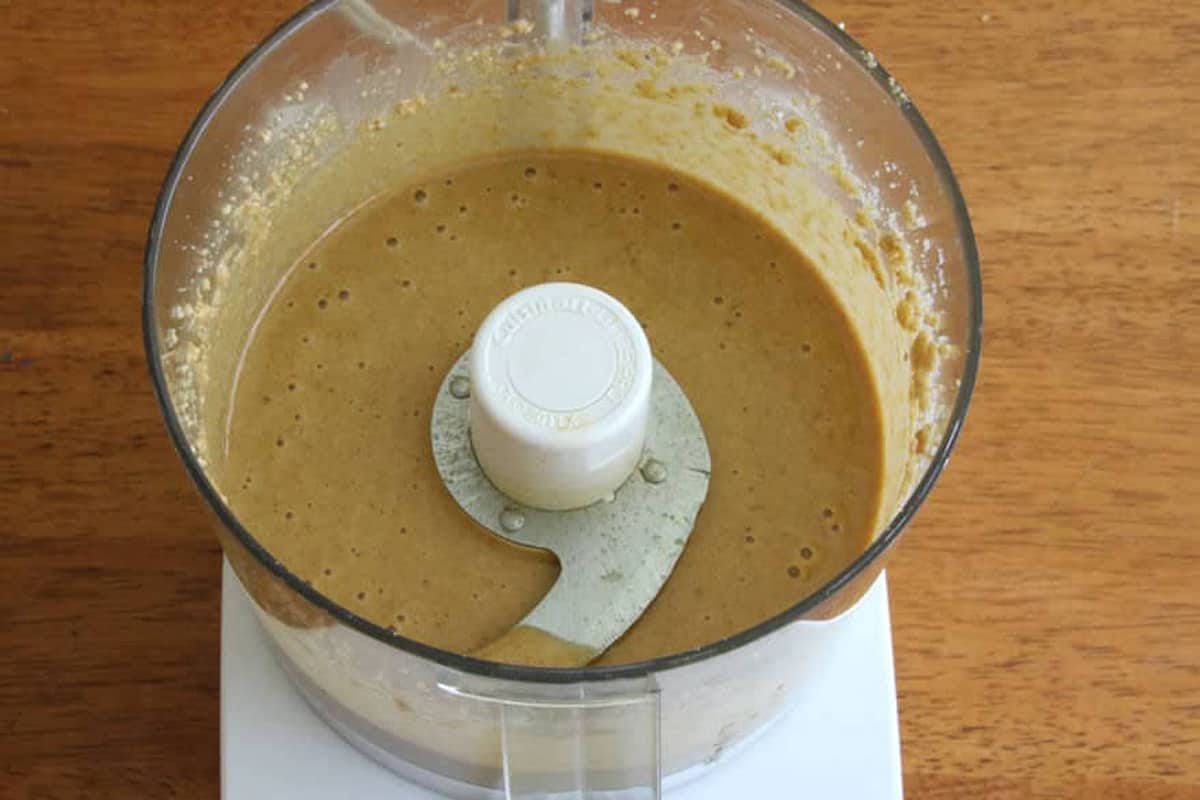
Storage & Freezing
Stored in the fridge in an airtight jar, tahini will keep for 1-2 months; potentially longer but for optimal freshness use it within that time frame. The oil will separate during storage, which is completely normal. Just give it a good stir before using.
Tahini can also be frozen for up to 3-4 months. You can freeze it in its jar, leaving some headspace because it may expand a little. For convenient smaller portions you can also divide it up in ice cube trays, freeze it, then put the frozen cubes in a freezer bag or container, and just take out what you need. Either way, let the tahini thaw slowly, ideally in the fridge overnight.
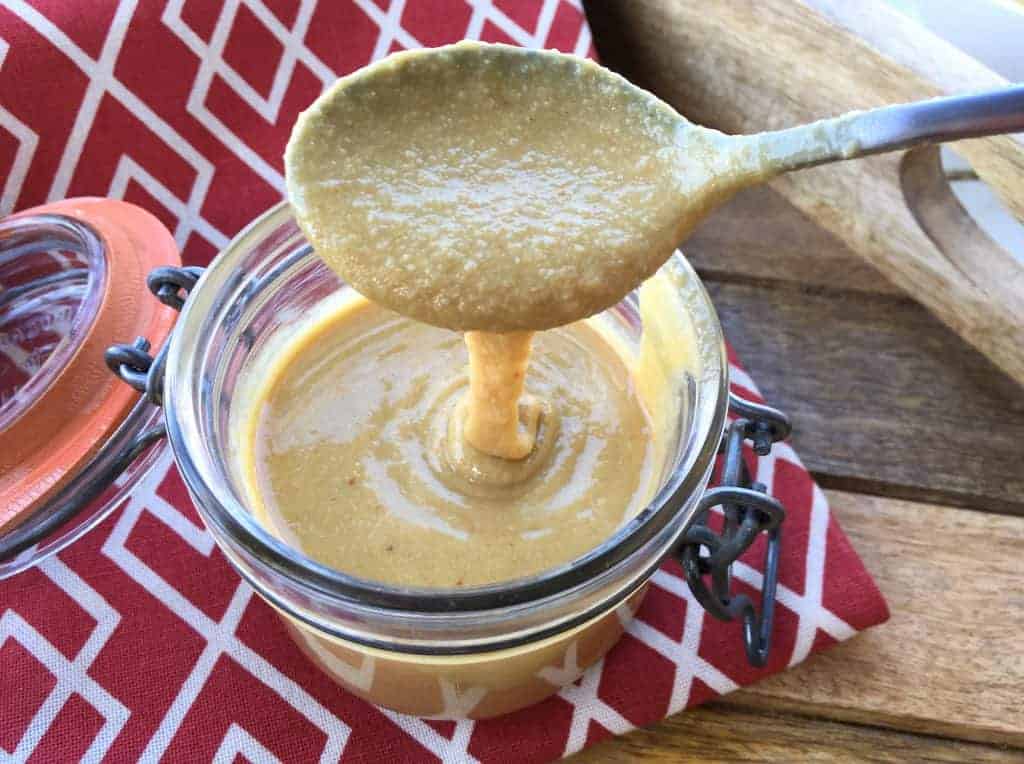
How To Use Taxhini
There are a number of delicious ways you can put your homemade to use. Here are just a few ideas:
- Hummus – its most popular use, check out our phenomenal Hummus Recipe.
- Baba Ganoush – like hummus, it’s wonderfully creamy and the tahini is a central star of the show.
- Tahin Pekmez – a popular dip in Turkey. It has the reputation as being the Turkish PBJ because it’s made with tahini (which has kind of a peanut-buttery taste) and grape molasses. Sound like a winning combination? It is!
- In Greece it’s a popular condiment in which to dip pita and souvlaki (grilled meat kabobs).
- In Israel it’s a staple topping for Falafel and shawarma. It’s also used to make halva-like treats.
- In East Asia it’s commonly used in noodle dishes.
- Throughout the Middle East it is used in sauces for meats and vegetables to enhance the flavor.
- It makes a really nice tahini salad dressing combined with lemon juice, olive oil, honey or maple syrup, garlic and salt.
- Drizzle it over your sandwiches, wraps, and lettuce wraps.
- Drizzle it over grilled meats and vegetables. It’s amazing on our Grilled Eggplant!
- Add it to your baked goods like cookies for a delicious twist!
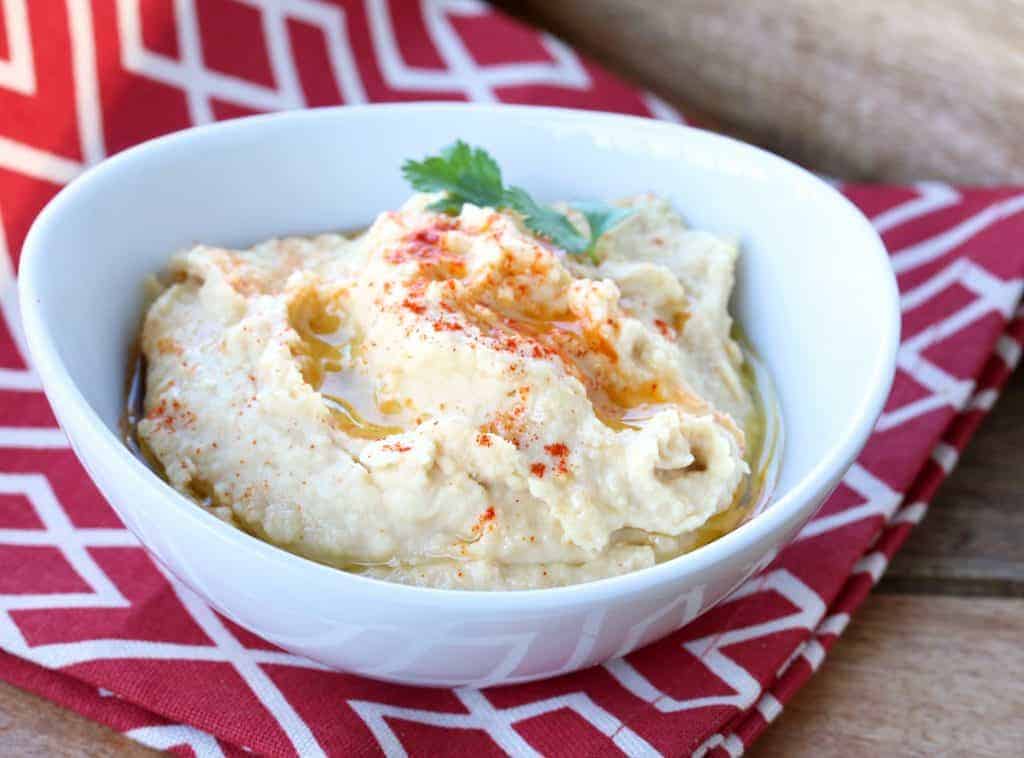
For more delicious homemade condiments be sure to try my:
- Tartar Sauce
- Yum Yum Sauce
- Jerk Sauce
- Bearnaise Sauce
- Black Bean Sauce
- Hoisin Sauce
- Big Mac Sauce
- Jerk Sauce
- Ponzu Sauce
- Char Siu Sauce
- Romesco Sauce
- Eel Sauce
- Sweet Chili Sauce
- Remoulade
- Teriyaki Sauce
- Sweet and Sour Sauce
Save This Recipe
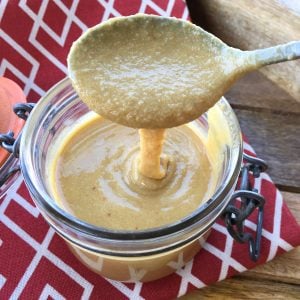
Homemade Tahini Recipe
Ingredients
- 1 cup hulled sesame seeds
- 3 tablespoons or more extra virgin olive oil ,see Note (see also blog post about why olive oil is added)
Instructions
- Heat a clean, dry cast iron or heavy duty skillet over medium high heat and add the sesame seeds. Stir frequently until they begin to turn golden brown and then stir constantly. Be careful, sesame seeds burn very easily.
- Once they're toasted, let them cool a few minutes then add them to a food processor. Start by adding 3 tablespoons of olive oil. Process the mixture into a paste, scraping down the sides. Add more olive oil until you reach the desired consistency (*see Note)
- Store the tahini in an airtight jar in the fridge and it will last for several months. Stir it throughly before you put it in the fridge because once it's chilled it's difficult to stir. This makes a little less than 3/4 cup tahini paste, depending on how much olive oil you use.
Notes
Nutrition
Originally published on The Daring Gourmet May 2017



















I made that hummus and it really was the BEST! Wow! I never made tahini before, but with the spices in it as described.
Fantastic, Mattie, thank you!
I’m totally hooked!!! I’ve been using it straight up as a spread and combining with various sauces, including tomato based and soy based primarily for noodles. Haven’t made Hummus with it yet. May have to make another batch soon as my double batch is almost gone after only a few days. Love the taste, but wondering if I overtoasted the sesame seeds, since the color is rather dark like peanut butter…
Thank you!!!
P.S. I did add a bit of sea salt, which cut the slightly bitter taste…
I’m glad you enjoyed it, Mimi, thanks so much for the feedback! Yes, the color largely has to do with how long the sesame seeds are toasted. As long as the tahini tastes good you didn’t over-toast the seeds.
Most recipes DO NOT call for sesame oil. It seems to sesame oil could enhance the sesame flavor.Is that good logic or would the sesame taste be too strong?
This is a little odd, I have been loving Tahini my whole life and in most blogs I read, they use the wrong recipe and they have subsequent challenges. What if I told you that you can make this amazing, delicious healthy, aka superfood of 2020, in about a min? would that be a major blogging opportunity?
pleaselet me know how!!!
I’ve made tahini as well. The same as you outline. But I get lazy when making hummus (even though it’s so easy) and sometimes just use sesame oil using a slightly thicker garbanzo paste. I actually have an oil expresser (since i can’t get sesame oil where I live) and it gives a nice flavor. Just don’t use the dark kind if you buy it.
Thank you for the recipe! It was the first time I made tahini and also the first time I tried it. I don’t know why, but it is a little bit bitter (I made it with olive oil, but alone it tastes good). I’ll make again again..
Great, Anthony! Yes, tahini is bitter and that’s normal. It isn’t meant to taste good alone, it’s when it is added to something, like hummus, that it tastes amazing.
Super easy and flavorful!
I used a coffee bean grinder to turn the seeds into a flour. Made the tahini much smoother.
.
Fantastic, thanks so much for the feedback!
Great idea . Couldn’t get it smooth in my food processor , but my all purpose grinder makes it, Thank you…
Made a little mess roasting the sesame seeds(those guys can fly) ,added it to your eggplant recipe and was nothing short of fantastic
Fantastic, Richard, I’m so glad you liked it – flying sesame seeds and all! :)
Hi. Can I use unhulled sesame seeds and replace olive oil with cold compressed coconut oil?
Hi Pearlyn, sure there’s no reason you can’t do either, just know that it will greatly impact/alter the flavor.
I will never buy store bought tahini again! Thanks!! I used this recipe (I only needed 2T) to make a dip with almonds, spices and lemon juice. I can’t wait to use it in other dishes as well.
That’s awesome, Carol, I’m so glad, thank you!
This tahini from scratch is insanely delicious! Terrific flavor and better than any tahini I’ve ever had before. I used unhulled instead of hulled organic seeds and it worked perfectly. Thank you.
Fantastic, Constance, thank you!
The nutritional information is scary…..indicates over a day’s worth of calories for one serving? What is the size of the serving? If the information is for the entire batch, how many servings and size of servings?
Hi Toni, it’s for the entire batch. I’ve just adjusted it to show per tablespoon – serving size is going to vary depending on what you’re using it for or in.
Greetings, after you complete the process of making tahini is refrigeration required? If not how long will et last in room temperature?
Hi, left unrefrigerated it will depend on the temperature of the room and the oil itself. You can definitely taste when oil goes rancid and that will be the best indicator to go on. Refrigerated tahini can last for several months and again, you’ll know by the taste if it’s rancid.
This was just short of a lifesaver for me since I can’t find Tahiti anywhere where I live (and very few people who know what I’m talking about when I asked about it…). Even finding the sesame seeds in this amount was a stupider chore than it should have been. But anyway, now I can finally make a growing list of recipes I’ve been sitting in because I couldn’t find tahini pre-made, and was too irrationally stubborn to buy it online.
There is something sort of big that I had to figure out on the fly while making this, that I don’t think I’ve seen in the rest of the coments, that I hope will help others if they come across it:
The recipe -how it came out for me, at least- came out far too thick. I’m talking cookie dough consistency, only gritty, dark-ish and of course, bitter (which is the only part I expected). It was so thick my first (test) batch may have made the motor on my food processor smoke a little. I can’t decide if it was that, or if the sesame paste itself started smoking.
I added a little bit more olive oil after that, like the recipe hints at doing, but it really didn’t change much. And since I didn’t want to overpower the whole thing with olive oil flavor, by putting too much in, and defeat the whole point of what I figure tahini I should be, I had to come up with another solution. So I quickly decided to get the consistency straightened out with water.
I filled up a 1 cup Pyrex measuring cup and drizzled in a little water at a time till it thinned out to the way it appears in the pictures above, and how I’ve seen it in cooking shows (Milk Street drizzled tahini into brownies in this weekends episode). By the end of all 3 batches I made today, I used a total of 1 and 1/4th cups water, but I’m sure the amount will be different for everone/batch with this problem.
The water had other perks than just thinning everything out. The added water helped the food processor work out the grittiness that wouldn’t work itself out when the moisture wasn’t present, greatly improving the texture of the tahini. The water also improved the color of the tahini; where the pre-water paste was dark, the post-water paste was lighter and much more like the color in the pictures above. It also helped the flavor quite a bit, evening the flavor out while leaving it still the right amount of bitter with a hint of olive oil, without it being the big POW of bitterness it was when it was a dark concentrated doughy paste.
Oh and I’m pretty certain it won’t separate (I looked at it a few hours ago and it was fine), in spite the oil and water situation. I’m fairly sure the food processor and probably the presence of the sesame emulsified everything together.
Hope this helps others with this issue. There seems to be only perks as long as you don’t add too much water and remember that you really can’t remove that water once it’s in (unless maybe if you cook it out, but I don’t know what that will do to it and it just seems like a huge hassle)
So I was wondering if you could freeze tahini paste? I freeze my pesto in ice-cube trays for serving size portions and wondered if I could do the same with this recipe and have it last longer.
Never ever EVER buying tahini paste again! This was so easy to make and gave my hummus a boost of flavor unlike any storebought tahini I’ve tried. Awesome recipe!